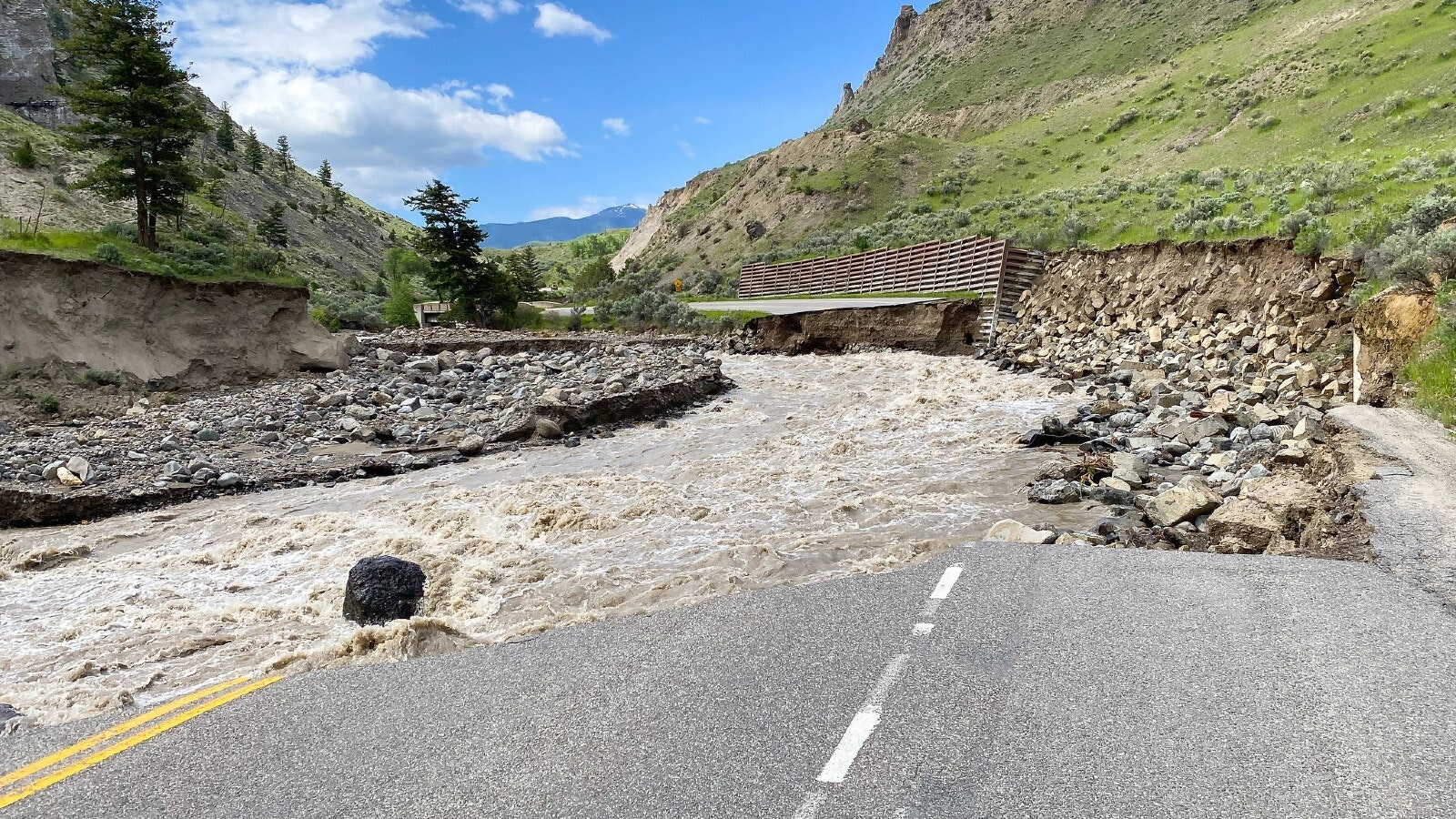With parts of Texas and other states getting inundated, and Yellowstone Park still recovering from a wash-out this spring and early summer, the term “1,000 year flood” is getting tossed about.
But whether that term is accurate is debatable, Wyoming weather and watershed experts said.
The Yellowstone floods were noteworthy, but it’s quite a stretch to say they’re the sort that occur only once a millennium, Don Day, a Cheyenne meteorologist, told Cowboy State Daily on Monday.
“We don’t have 1,000 years of precipitation records anywhere in the world, much less in the Western United States,” Day said. “It (‘1,000 year flood’) is a statistical pretzel, based on 80 years of rainfall data.”
The Yellowstone floods this year are better described as a “1 in 500-year event,” Tony Bergantino said in an email Monday to Cowboy State Daily. He’s the director of the Water Resources Data System-Wyoming State Climate Office at the University of Wyoming.
“Yellowstone flooding was one for the books,” he said. “For single-day peak flows, it was the highest I had seen at two different gauges (Lamar River near the Tower Ranger Station and Yellowstone River at Corwin Springs [Montana]).”
Day and Bergantino said Yellowstone’s misfortune was triggered by early heavy rains hitting snowpack.
“In heavy spring flooding, it’s typically a combination of snowmelt and early-season rain,” Day said. “If you look at the records of flooding on Wyoming’s major rivers, it’s in that May-June timeframe.”
The combination of snowmelt and rain on already-saturated ground in Yellowstone was “A perfect storm, so to speak … unfortunately,” Bergantino said.
Whenever timeframes, such as “1,000 year event”, are used to describe floods, it’s referring to a statistical likelihood, rather than the actual period between events, Day said.
“Just ask people in Texas, they have a ‘1,000-year flood’ every five years,” he said.
“We haven’t had a flood of this scale in Yellowstone since we’ve been up there, observing and taking data,” Day added. “We don’t know if there was a flood of the same scale 200 years ago.”
Heavy storms and flooding that occur later in the year in Wyoming, such as the “monsoon” that hammered Laramie in early August, are usually caused by cooler air mixing with warm, moist air masses that come north from Mexico and Central America, Day said.
“Those storms tend to be highly localized,” he said, noting that rain gauges just a few miles apart during the Laramie storm measured vastly different amounts.
Drought Continues
Heavy storms hitting small areas is one reason why it’s too early to celebrate the end of the drought in parts of Wyoming, Day said. Parts of western and northwestern Wyoming are doing better, but the drought persists across some of central and southeastern portions of the state.
Bergantino agreed that huge, fantastic storms in certain places do little to relieve long-term drought.
“Once the event is over, the soil starts to dry again and, unless it is recharged by further precipitation, conditions again deteriorate,“ he said. “That is why for drought-busting, I’d much rather see the same amount of precipitation from these large events spread out over several lesser ones rather than all at once.”
Next spring and summer might bring such weather, he said. “So, yes, there is hope that an end (or at least improvement) could be in sight.”
Day said he expects this fall and early winter to be warm, but for temperatures to plunge and heavy snowfall to come later.





